(Down - Up - Top)
BR 12.5 - The Dummy Reversal (an Advanced play technique)
Situation 7
Now consider the deal below. The contract is 4 Hearts.
By simply drawing trumps Declarer will end up making a total of 8 tricks, five in the trump suit plus 2 Club and one Diamond winner. So that is not going to work.
Ruffing two Diamonds in Dummy before drawing trumps ?
That is not going to work either. As soon as the Opponents become aware of Declarer's intention (when he plays the Diamond Ace, followed by a small Diamond) they will start drawing trumps themselves and Dummy will be able to ruff one Diamond trick at the most. Not enough to make the contract.
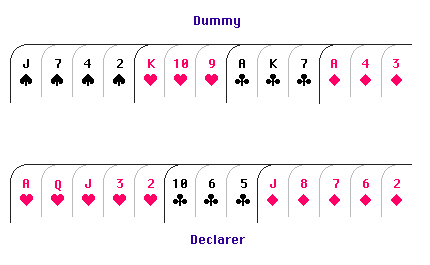
Instead Declarer decides to do a Dummy Reversal play, by
- first ruffing Dummy's four Spade losers in his own hand,
- and then draw the enemy trumps with the three high trumps from Dummy.
Declarer wins the King of Spades opening lead by a ruff in his own hand. At trick 2 he leads a small Diamond to Dummy's Ace.
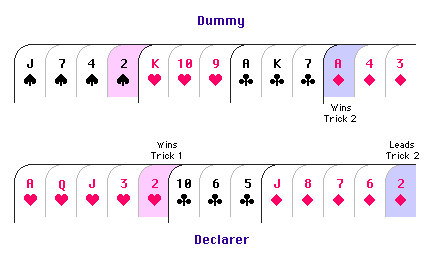
This brings the lead back to Dummy, who plays (trick 3) a second small Spade, which is ruffed by Declarer with the ACE !
At trick 4 Declarer leads a small Club to Dummy's Ace . . . .
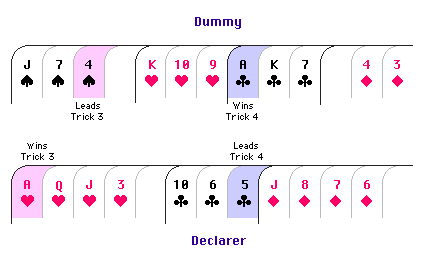
. . . . which brings the lead back to Dummy for yet another Spade lead (trick 5) and ruff by Declarer with the Queen.
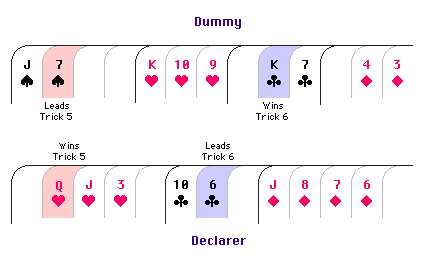
Another lead to Dummy's Club King (trick 6), provides the entry for the last Spade lead and ruff (trick 7).
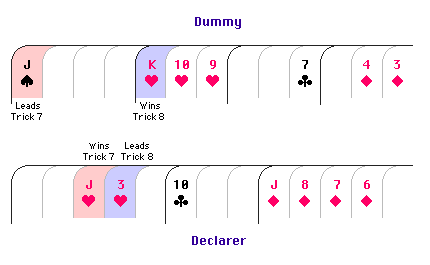
Declarer then (trick 8) finally leads his last remaining small trump to Dummy, who proceeds to win three rounds of trumps. This brings the total to 10 winning tricks, four ruffs by Declarer plus three trump tricks and three side suit winners in Dummy. (Any other opening lead would have the same result, provided a trump lead is won in Dummy.)
| Also note that Declarer ruffed with his high trumps, making sure to leave a small trump at the end to lead from his hand to Dummy. He could have kept a Jack or Queen, as these could have been overtaken by Dummy's King. But having at the end only the trump Ace in his hand he would not be able to enter Dummy and draw the enemy trumps.
Also using Declarer's high trumps for ruffing prevents the Opponents from over ruffing ! |
The Dummy Reversal is the rare exception when it pays to ruff in the hand with the longer trump suit.
It requires the following conditions :
- Dummy's trumps must be high enough to be able to draw the enemy trumps.
- Dummy must have length in Declarer's singleton or voided suit.
- Dummy must have enough entries to lead the ruff suit back to Declarer.
- Declarer should have high trump cards too, so that they can not be over ruffed by the enemy.